7: Can you lift something heavier than yourself?
Have you ever tried to lift something that was heavier than yourself? Do you think this is even possible?
These resources are hand-picked by the TES team

Spaghetti Challenge: STEM activity
In this race against the clock students work as a team to build the highest tower possible out of dried spaghetti and marshmallows.
The objective of this lesson is to explore structures and investigate what methods of building can make the tallest and strongest structure. By testing their prototype buildings, students will also have the opportunity to rebuild and alter their designs to improve them, giving an insight into the real-life processes of testing, redevelopment and prototyping that engineers and scientists use.

Stonehenge: The Silence of the Stones
An activity based worksheet showing the difficulties of doing history without written records. Designed to enable weaker students in KS3 to complete most of the tasks or could be used at KS2.
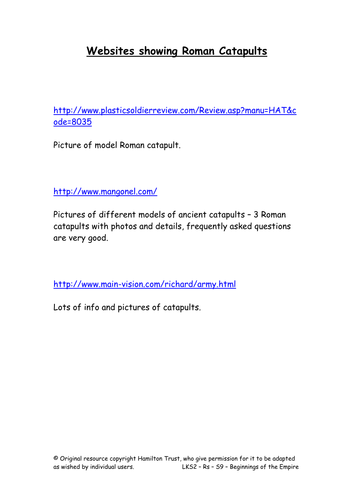
Design & Make Catapults
Children look again at Roman catapults. Using a wide variety of materials, incl some mechanical components, they design & create a working model of a catapult in the Roman style. They develop their ideas, then compete to see whose catapult works best!
Suitable for years 3 and 4.
Suitable for years 3 and 4.

Music,song, movement and rhyme . Worms
2 Videos , backing track for wriggly worm, and opportunities to play instruments on PPT. Separate video of slow worm for children to study the shapes it makes and music to move to
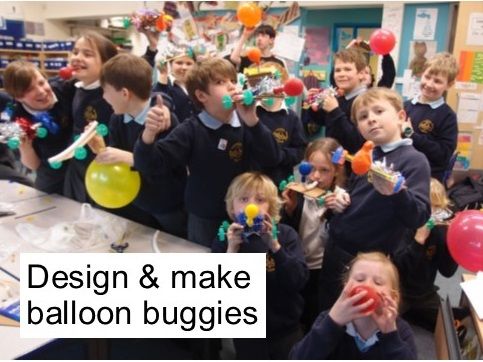
Balloon Buggies - Forces & Motion KS2/3
In this exciting practical session pupils will design, build and test their own balloon buggies using cheap and recycled materials, whilst linking to KS2 and KS3 Science, DT and Mathematics curricula.
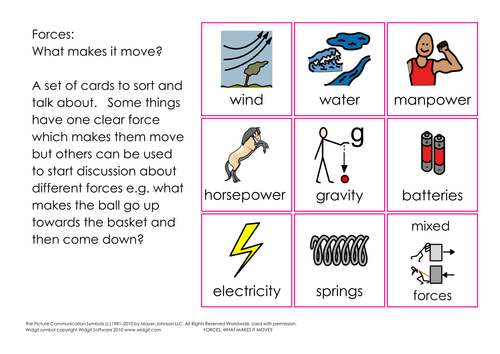
Forces: What makes it move?
Fully illustrated with Widgit or PCS Symbols. There is a set of cards to discuss and sort into different force groups, and a mind-map to complete by drawing in another example for each force shown.
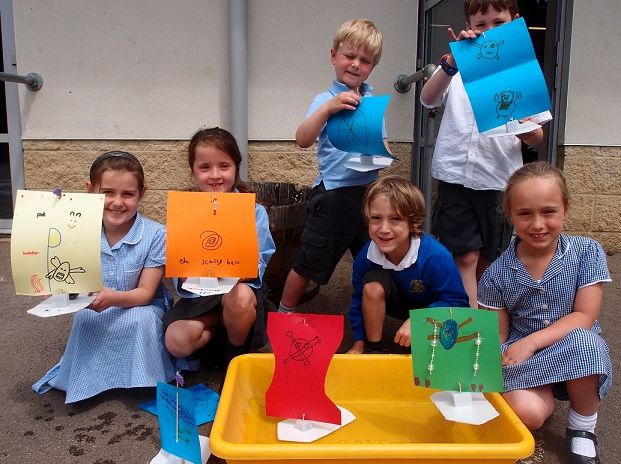
Make a sailboat - Materials & Forces KS1/2
In this fun STEM design and make session pupils will group materials according to whether they float, then design, build and test their own model sailing boats, whilst linking to KS1 and KS2 Science and Design and Technology curricula.
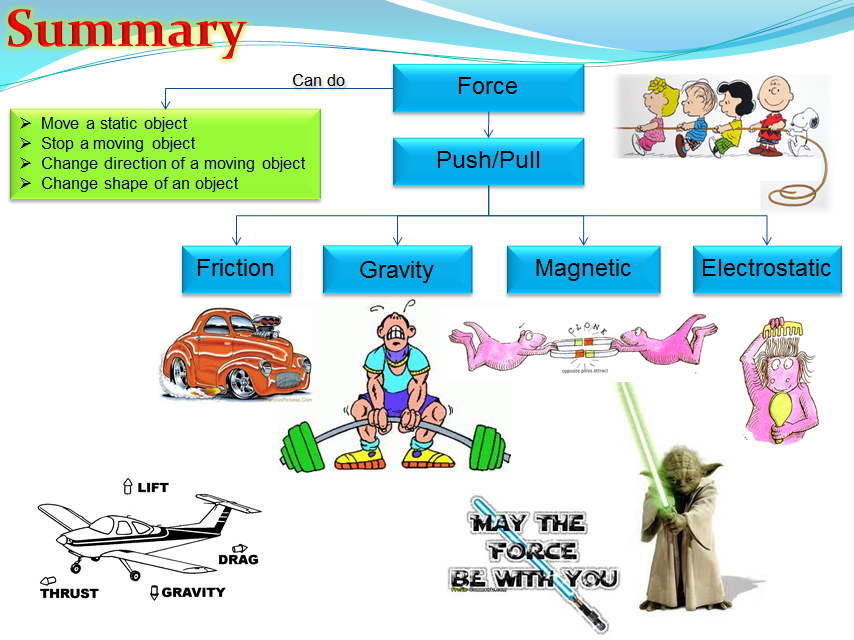
Types of Forces (Physics)
This lesson is about Types of forces. (Friction, Gravity, Magnetic force, Electrostatic force)
A part of a science course for grade 8 (Physics). The files contain the theories, lecture and practices, as well as links to videos and online simulations. Additionally there is a PPT file for extra practice in class.
The set includes Power-Point presentation and iBook, which is an Interactive Book, where the students fill the blanks that goes in accordance with the PPT slides.
In addition there are all the answers to the iBook for the teacher.
A part of a science course for grade 8 (Physics). The files contain the theories, lecture and practices, as well as links to videos and online simulations. Additionally there is a PPT file for extra practice in class.
The set includes Power-Point presentation and iBook, which is an Interactive Book, where the students fill the blanks that goes in accordance with the PPT slides.
In addition there are all the answers to the iBook for the teacher.

Forces Fairground Display
This is a Forces Fairground display that I made which ends up being a colourful Ferris Wheel. The display includes explanations for the following forces:
Gravity
Water Resistance
Pulleys
Forces
Parachutes
Machines
Air Resistance
Friction
Levers
Mechanisms
Springs
Movement
The display has a quiz which pupils can interact with too.
Gravity
Water Resistance
Pulleys
Forces
Parachutes
Machines
Air Resistance
Friction
Levers
Mechanisms
Springs
Movement
The display has a quiz which pupils can interact with too.

Year 5 science - Forces - powerpoints, worksheets, planning & investigation sheets
A set of resources for the new science curriculum, looking at different aspects of forces such as air resistance, water resistance, friction, gravity and mechanisms. It contains:
1. INTRODUCTION TO THE TOPIC - LO: To find out what the children already know about forces
POWERPOINT: A recap of previous learning from Year 3.
WORKSHEET: A sheet for the children to record what they already know about forces.
2. FALLING TO EARTH - LO: Explain that unsupported objects fall towards the Earth because of the force of gravity acting between the Earth and the falling object
POWERPOINT: A look at gravity and explanations of weight, newtons, and how forces can balance objects to keep them from falling.
WORKSHEET 1: Force meter recording sheet
WORKSHEET 2: Falling objects and gravity recording sheet
3. FRICTION - LO: Identify the effects of friction that act between moving surfaces
POWERPOINT: Explains what friction is, when it happens and how useful it can be in daily life.
WORKSHEET: Friction recording sheet
4. WATER RESISTANCE - LO: Identify the effects of water resistance that act between moving surfaces
POWERPOINT: Explains what water resistance is and what effects it can have. Looks at different shapes and how high or low the water resistance would be for each.
WORKSHEET: Water resistance recording sheet
5. AIR RESISTANCE - LO: Identify the effects of air resistance that act between moving surfaces
POWERPOINT: Explains air resistance and how it can slow different objects down. Looks at ways in which it can be useful and situations where it is important.
WORKSHEET 1: Air resistance activity
WORKSHEET 2: Weight in water and air recording sheet
6. LEVERS, PULLEYS AND GEARS - LO: Recognise that some mechanisms, including levers, pulleys and gears, allow a smaller force to have a greater effect.
POWERPOINT: Looks at and explains each mechanism in turn, giving examples of each and how forces are altered by them.
7. FORCES RECAP
POWERPOINT 1: A recap of all the learning covered in the topic
POWERPOINT 2: A quiz
WORKSHEET 1: Sheet for recording what they have learnt
WORKSHEET 2: A quiz answer sheet, can be used for assessment.
OTHER RESOURCES
A-Z lettering, with a picture background
A4 Forces title
Forces topic booklet front cover - with space for children to draw their own forces design.
Vocabulary powerpoint - can be used as a show and printed out for display.
Writing sheet
Investigation and recording sheets - A folder of blank tables, graphs and planning and recording sheets
Year 5 Forces medium term planning: An outline of the activities and learning objectives with websites and ideas. It can be added to and amended for your own use
1. INTRODUCTION TO THE TOPIC - LO: To find out what the children already know about forces
POWERPOINT: A recap of previous learning from Year 3.
WORKSHEET: A sheet for the children to record what they already know about forces.
2. FALLING TO EARTH - LO: Explain that unsupported objects fall towards the Earth because of the force of gravity acting between the Earth and the falling object
POWERPOINT: A look at gravity and explanations of weight, newtons, and how forces can balance objects to keep them from falling.
WORKSHEET 1: Force meter recording sheet
WORKSHEET 2: Falling objects and gravity recording sheet
3. FRICTION - LO: Identify the effects of friction that act between moving surfaces
POWERPOINT: Explains what friction is, when it happens and how useful it can be in daily life.
WORKSHEET: Friction recording sheet
4. WATER RESISTANCE - LO: Identify the effects of water resistance that act between moving surfaces
POWERPOINT: Explains what water resistance is and what effects it can have. Looks at different shapes and how high or low the water resistance would be for each.
WORKSHEET: Water resistance recording sheet
5. AIR RESISTANCE - LO: Identify the effects of air resistance that act between moving surfaces
POWERPOINT: Explains air resistance and how it can slow different objects down. Looks at ways in which it can be useful and situations where it is important.
WORKSHEET 1: Air resistance activity
WORKSHEET 2: Weight in water and air recording sheet
6. LEVERS, PULLEYS AND GEARS - LO: Recognise that some mechanisms, including levers, pulleys and gears, allow a smaller force to have a greater effect.
POWERPOINT: Looks at and explains each mechanism in turn, giving examples of each and how forces are altered by them.
7. FORCES RECAP
POWERPOINT 1: A recap of all the learning covered in the topic
POWERPOINT 2: A quiz
WORKSHEET 1: Sheet for recording what they have learnt
WORKSHEET 2: A quiz answer sheet, can be used for assessment.
OTHER RESOURCES
A-Z lettering, with a picture background
A4 Forces title
Forces topic booklet front cover - with space for children to draw their own forces design.
Vocabulary powerpoint - can be used as a show and printed out for display.
Writing sheet
Investigation and recording sheets - A folder of blank tables, graphs and planning and recording sheets
Year 5 Forces medium term planning: An outline of the activities and learning objectives with websites and ideas. It can be added to and amended for your own use

Energy and Simple Machines Interactive Science Notebook
Energy and Simple Machines Interactive Science Notebook
Energy & Simple Machines Interactive Notebook Section has a lot
(42 PAGES) to offer! Before using Interactive Science Notebooks, students got lost in writing and not comprehending the science. The INBs allow the students to keep a neat, interactive, functional, and yes; a fun notebook.
- 40 Flip-Fold Vocabulary words & definitions
o Steps of The Scientific Method
o Metric Prefixes
o SI Units
• Unlike other Interactive Notebooks, this INB has typed definitions.
• This is important for students (Modifications & 504) who require written copies of Notes.
- Kinetic Vs. Potential Venn Diagram
- Answer Keys
- What is Energy Notes
- Energy Transfer – Fill in the Blank Notes (FBN)
- Where did it come from? –FBN
- Law of Conservation of Energy Notes
- Energy Transfer Foldable
- Radiation FBN
- Conduction FBN
- Convection FBN
- %’s of Energy Transfer Foldable
- Multiple Choice Questions
- BCR
- Nonrenewable Mineral & Energy Resources FBN
- Greenhouse Gases & Global Warming Notes
- Greenhouse Gas Sketch, Cut & Paste Foldable
- Renewable Resources Notes
- Inexhaustible Resources
o Photovoltaic Cells
- Wind Power
- Energy Resources Concept Mapping
- Energy Forms/Resources Concept Map
- Converting Celsius, Fahrenheit, & Kelvin
- F=W/D Foldable
- Levers & Mechanical Output Foldable
- Pulleys Foldable
- Teacher’s Copies of FBNs
Energy & Simple Machines Interactive Notebook Section has a lot
(42 PAGES) to offer! Before using Interactive Science Notebooks, students got lost in writing and not comprehending the science. The INBs allow the students to keep a neat, interactive, functional, and yes; a fun notebook.
- 40 Flip-Fold Vocabulary words & definitions
o Steps of The Scientific Method
o Metric Prefixes
o SI Units
• Unlike other Interactive Notebooks, this INB has typed definitions.
• This is important for students (Modifications & 504) who require written copies of Notes.
- Kinetic Vs. Potential Venn Diagram
- Answer Keys
- What is Energy Notes
- Energy Transfer – Fill in the Blank Notes (FBN)
- Where did it come from? –FBN
- Law of Conservation of Energy Notes
- Energy Transfer Foldable
- Radiation FBN
- Conduction FBN
- Convection FBN
- %’s of Energy Transfer Foldable
- Multiple Choice Questions
- BCR
- Nonrenewable Mineral & Energy Resources FBN
- Greenhouse Gases & Global Warming Notes
- Greenhouse Gas Sketch, Cut & Paste Foldable
- Renewable Resources Notes
- Inexhaustible Resources
o Photovoltaic Cells
- Wind Power
- Energy Resources Concept Mapping
- Energy Forms/Resources Concept Map
- Converting Celsius, Fahrenheit, & Kelvin
- F=W/D Foldable
- Levers & Mechanical Output Foldable
- Pulleys Foldable
- Teacher’s Copies of FBNs

Forces: Build Your Own Airplane (Information Provided)
This build your own airplane task uses 18 information cards. Students choose 6 cards and calculate the forces involved. There are 3 options for each of the parts:
- nose cone
- wings
- flaps
- engines
- fuselage
- tail fin
This should be a fun but informative activity that gets students thinking and analysing problems. I have added a template that can be used with lower ability students.
- nose cone
- wings
- flaps
- engines
- fuselage
- tail fin
This should be a fun but informative activity that gets students thinking and analysing problems. I have added a template that can be used with lower ability students.
Visit our gallery to see what you've discovered
